Describe a translation.
Sliding a figure up, down, left, right, or diagonally, a combination of any direction where the figures remain congruent.
Describe a reflection.
Flipping a figure to create a mirror image where the figures remain congruent.
Describe a rotation.
The transformation of a geometric shape by turning it around a fixed point (usually the origin) by a specified number of degrees, either clockwise or counterclockwise, on the coordinate plane.
Describe what a sequence of rigid motion transformations means.
A combination of multiple translations, reflections, and/or rotations where the figures remain congruent.
What are the defining factors of a set of congruent figures?
same size
same shape
a rigid motion or composition of rigid motions were used to map one of the figures to the other
If a figure translates to the left or right, which coordinate is being affected?
What is the x-coordinate?
If a figure reflects over the y-axis, which coordinate changes?
What is the x-coordinate?
Describe what happens to the coordinates when a figure is rotated 180 degrees.
The x- and y-coordinates change to be the opposite sign.
Reflecting a figure over the x-axis followed by a reflection over the y-axis, is the same as __________________ a figure.
rotating
Describe a congruence transformation that maps the blue preimage to the green image.
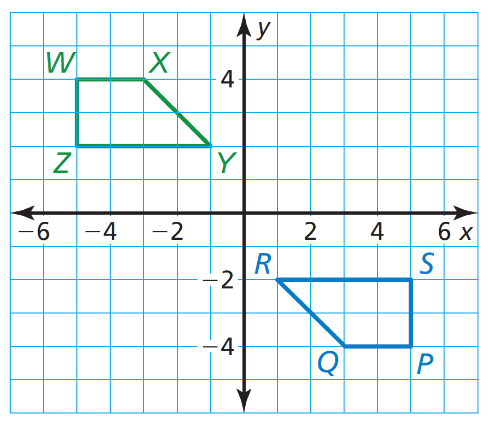
a 180 degrees rotation about the origin
Describe the translation from Triangle DEF to Triangle IGH.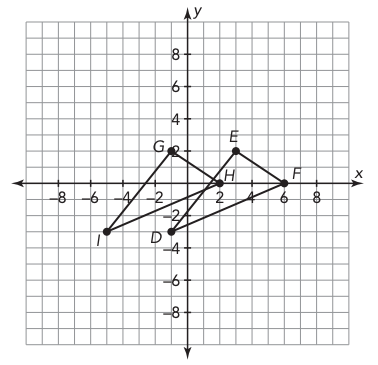
Trangle DEF translated 4 units to the left or -4 units horizontally.
Describe the reflection of Triangle PQR to Triangle XYZ.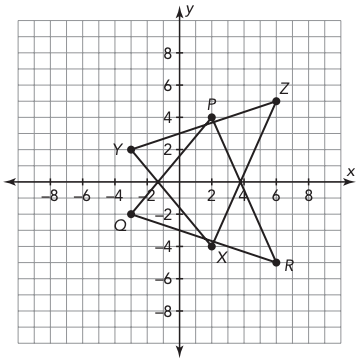
Triangle PQR was reflected over the x-axis.
Describe the rotation from Trapezoid ABCD to Trapezoid MNOP.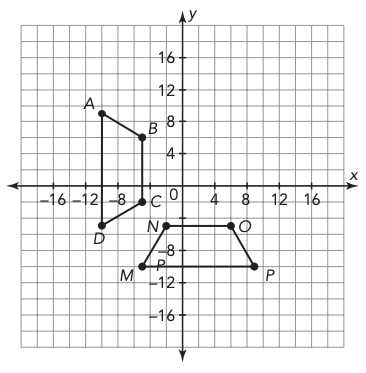
Trapezoid ABCD rotated 90 degrees counterclockwise.
Describe a sequence of rigid motions that can be used to verify that
the shaded pre-image is congruent to the image.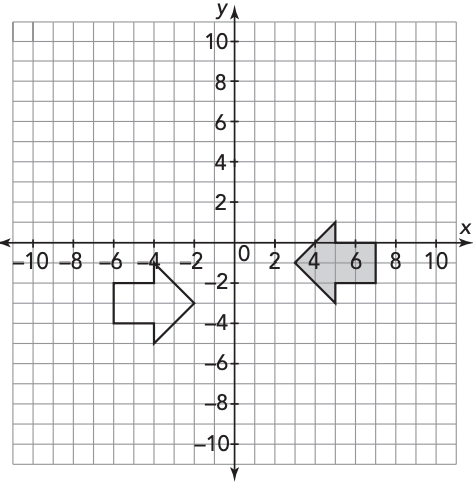
The pre-image rotated 180 degrees then translated 4 units down and right 1 unit.
Describe a single transformation that maps A to A".
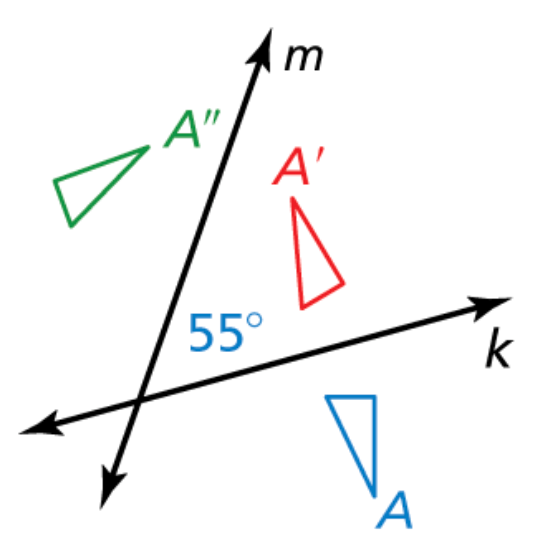
a 110 degree rotation about the intersection of lines m and k
Describe the translation of quadrilateral KLMN to quadrilateral RSPQ.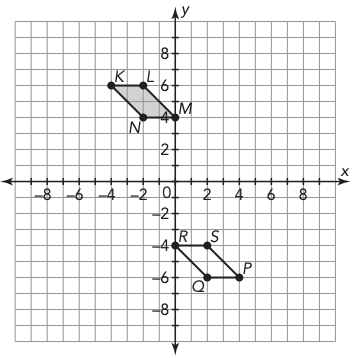
Quadrilateral KLMN translated down 10 units and right 4 units or -10 units vertically and 4 units horizontally.
Reflect Triangle JKL over the y-axis to form Triangle J'K'L'. What are the coordinates of the vertices of Triangle J'K'L'?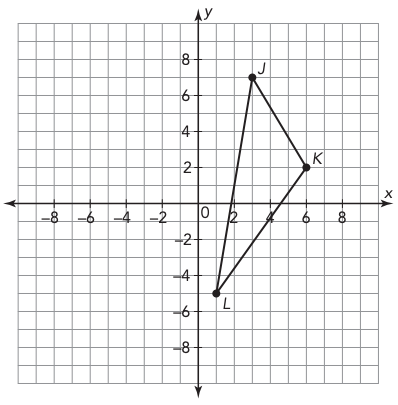
J'(-3,7), K'(-6,2), and L'(-1,-5)
Compare and contrast the coordinates for the image of a 90 degree CCW rotation vs. the coordinates of the image of a 270 degree CCW rotation.
X and y change places in both. The y changes to opposite sign in the 90 degree CCW rotation and the x changes to opposite sign in the 270 degree CCW rotation.
Describe the sequence of rigid motions to map Figure K to Figure K'.
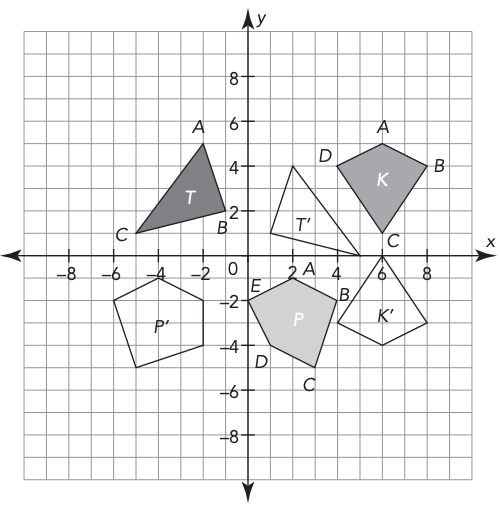
Figure K was reflected over the x-axis the translated up one unit.
If the triangles QRS and BCD are congruent, what is the corresponding part of SQ?
DB
Triangle XYZ has vertices X(-3,5), Y(1,-3), and Z(-6,-4). Translate Triangle XYZ 2 units to the right and 3 units up to form Triangle X'Y'Z'. What are the coordinates of the vertices of Triangle D'E'F'?
X'(-1,8), Y'(3,0), and Z'(-4,-1)
Describe the reflection.
Triangle PRG reflected across the y-axis.
Determine the coordinates of the triangle's image after the given rigid motion transformation.

D'(-2,-2), E'(-5,1), and F'(1,4)

Triangle PQR is reflected over the x-axis then translated to the right 5 units.
Find the value of x.
x = 15